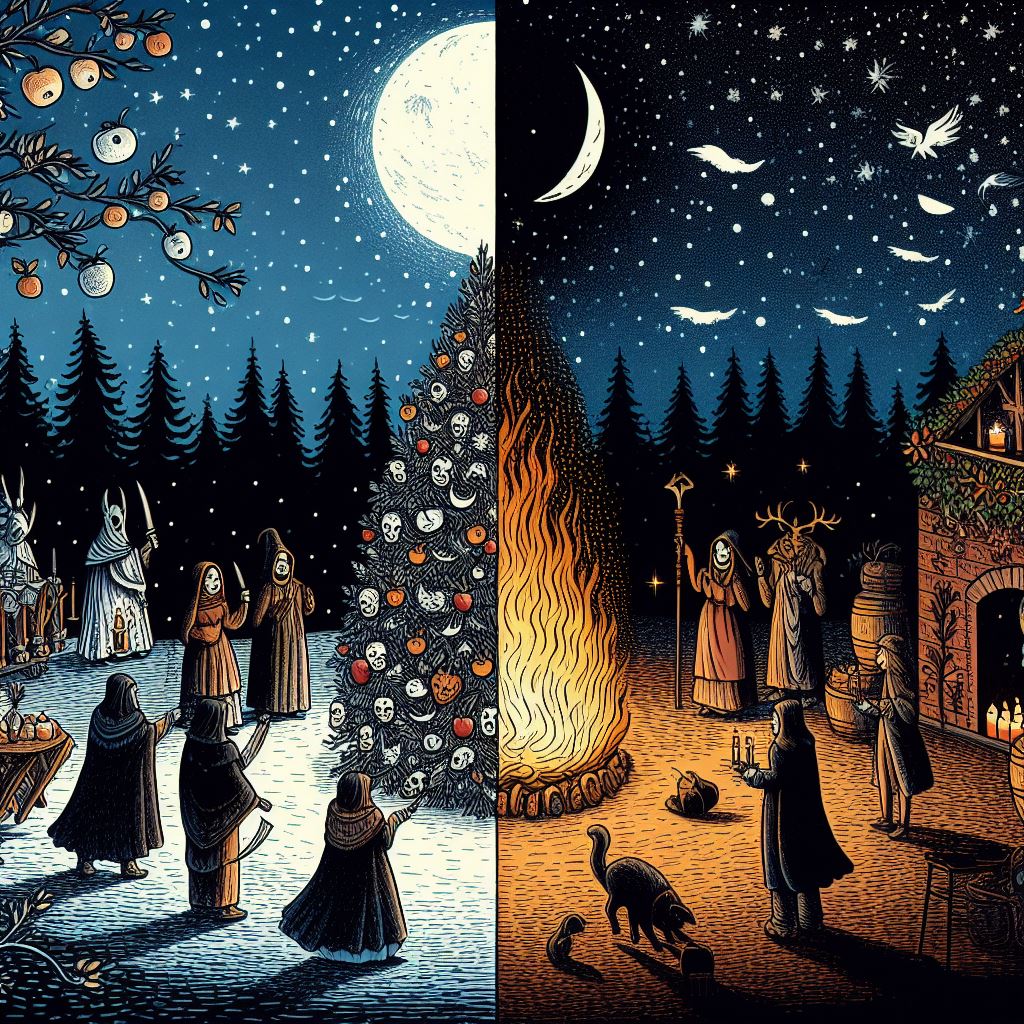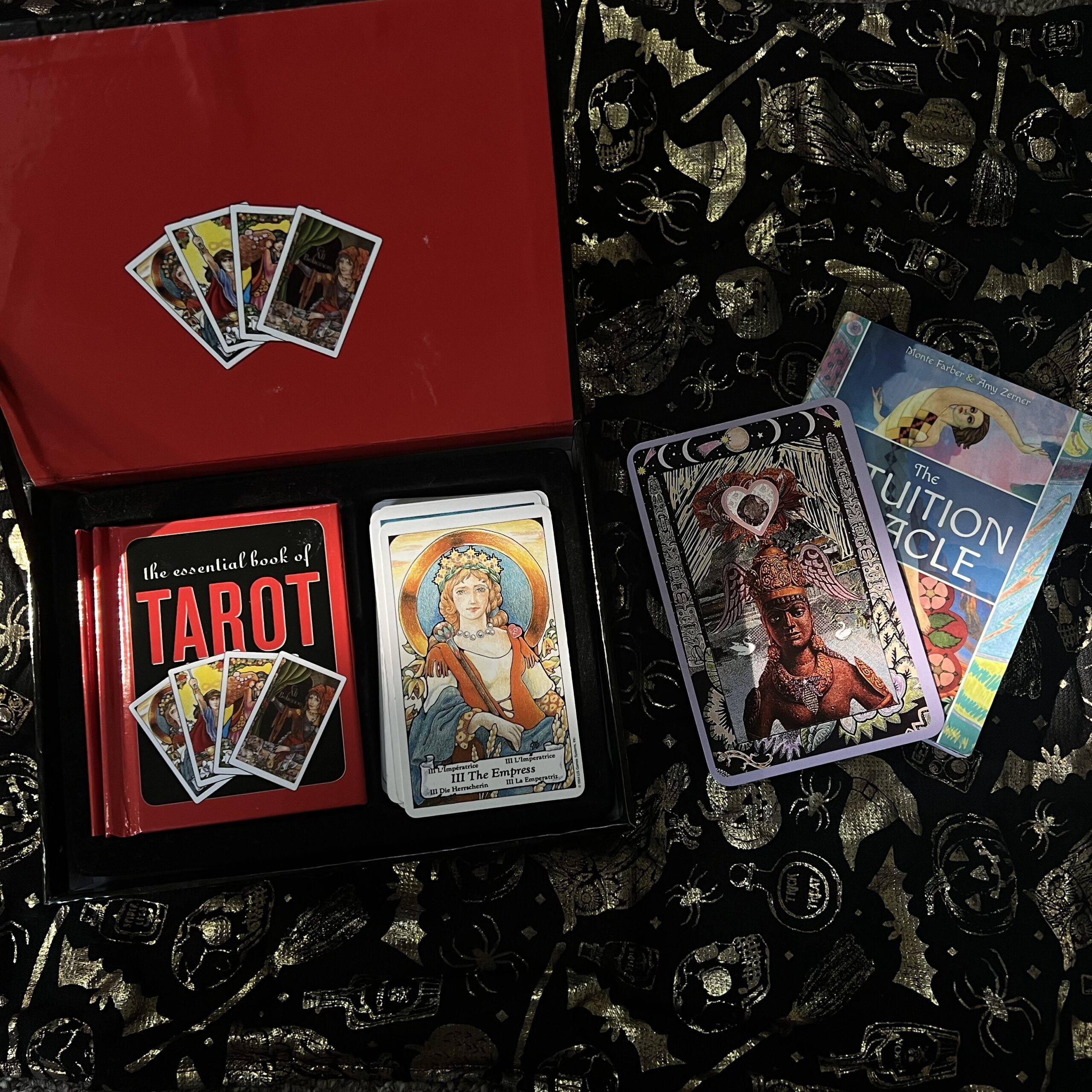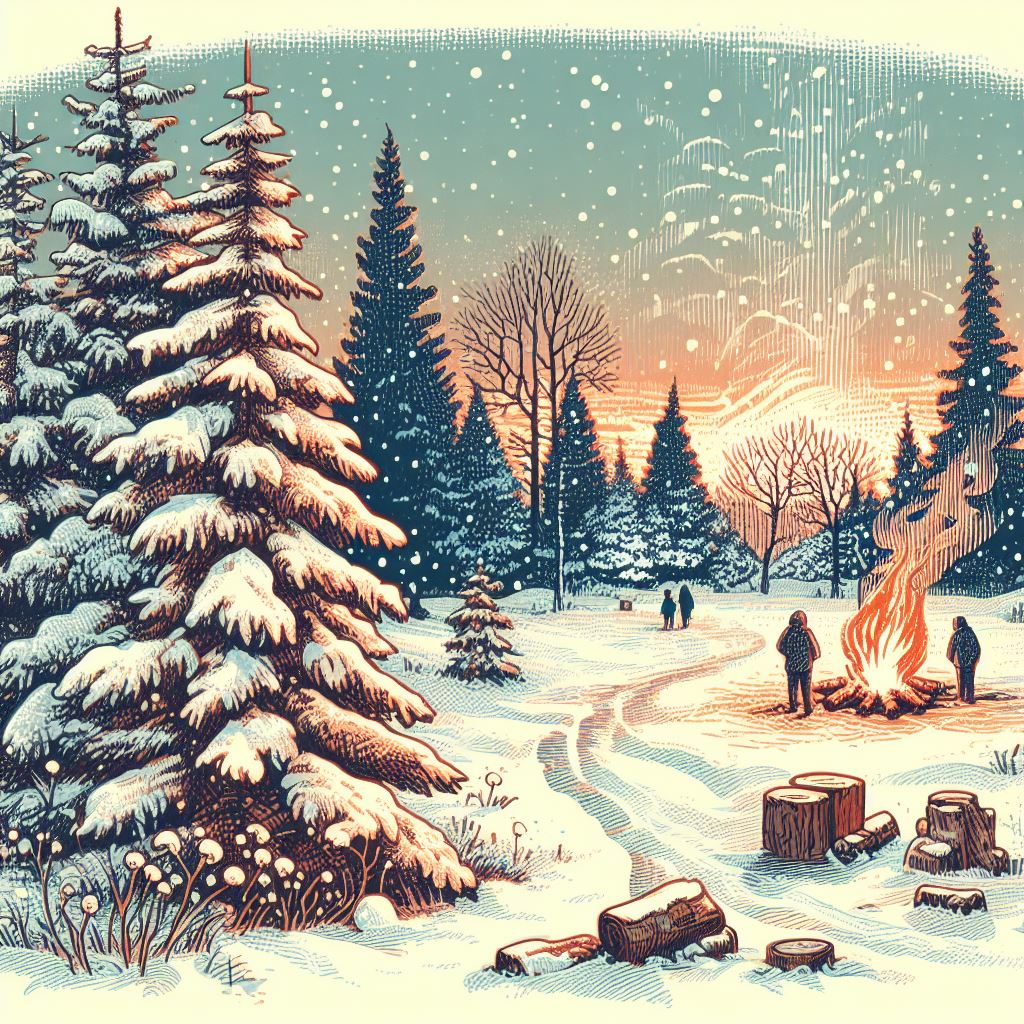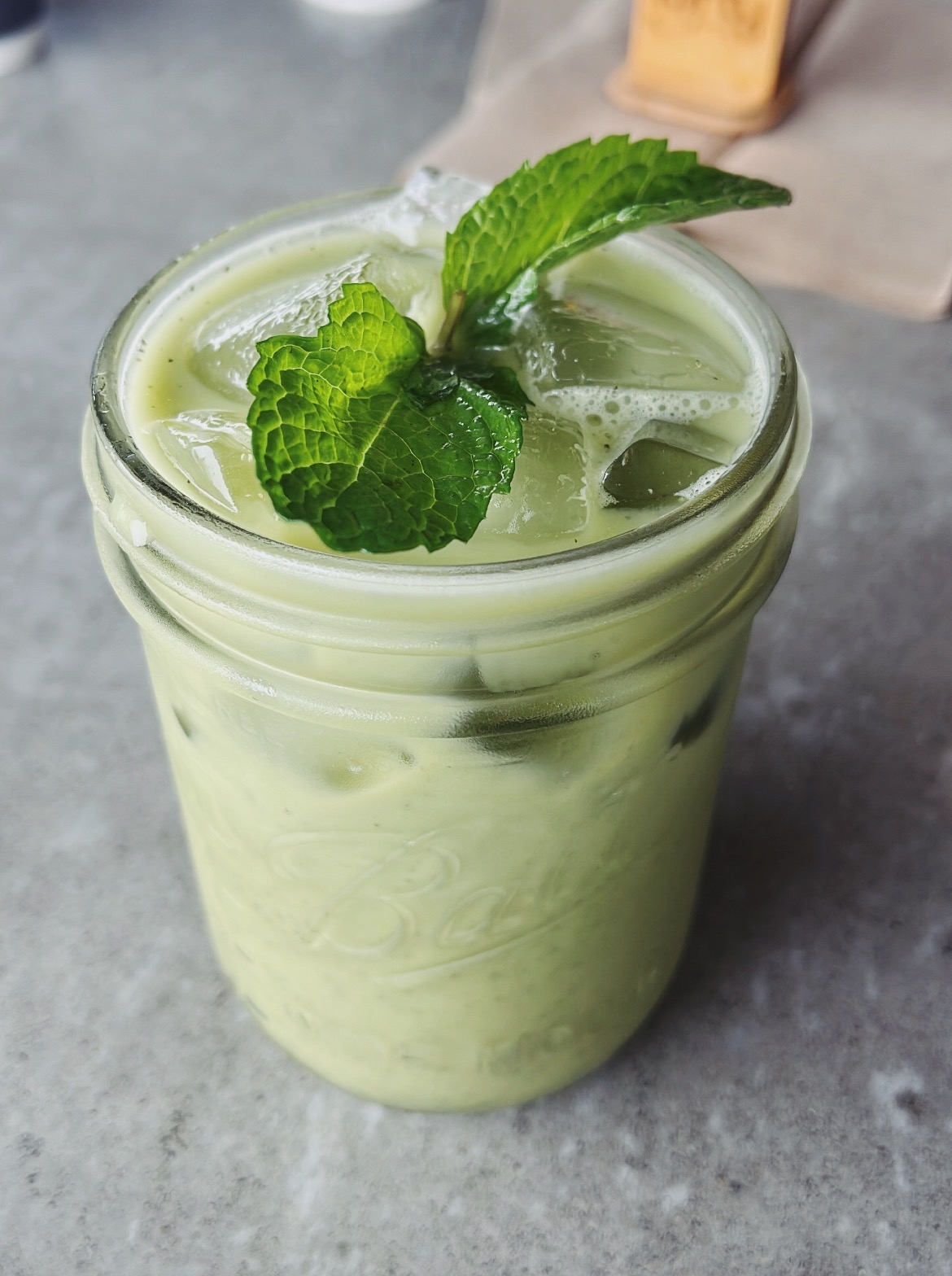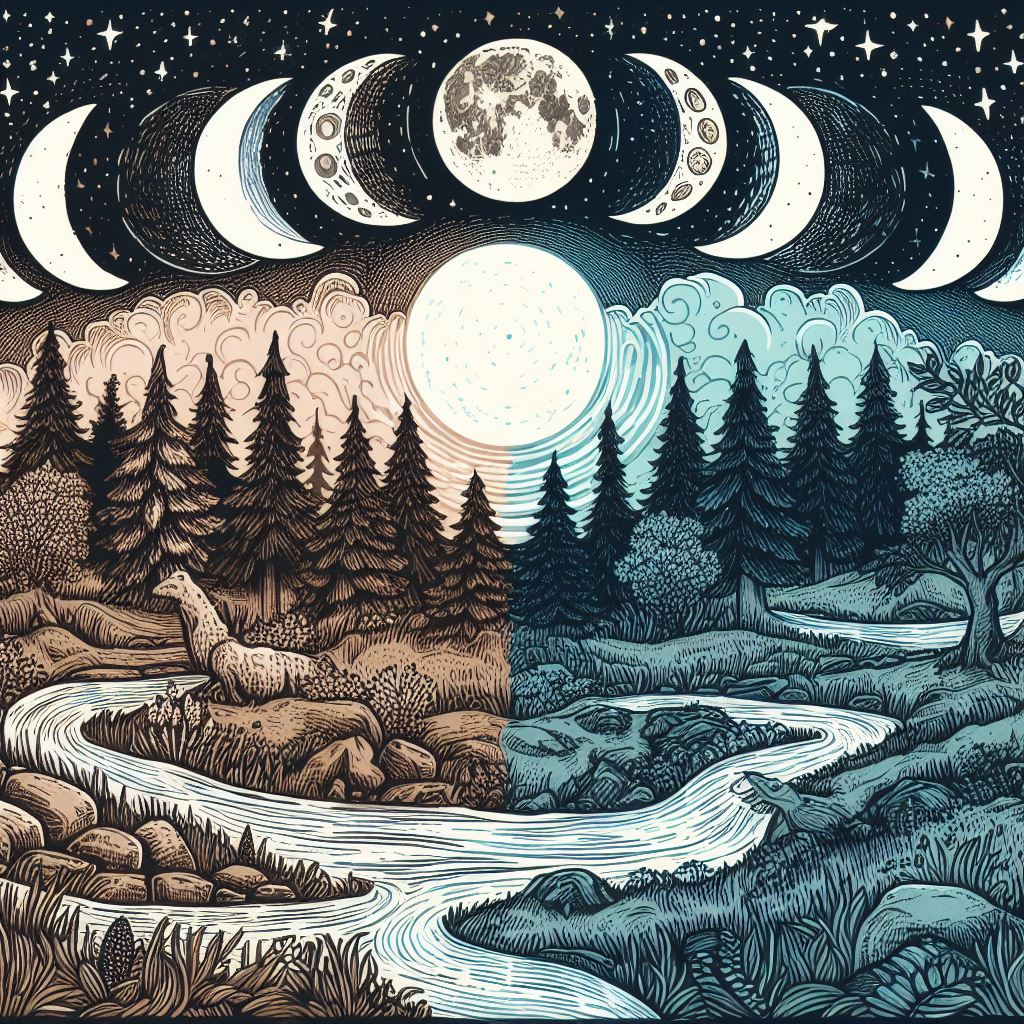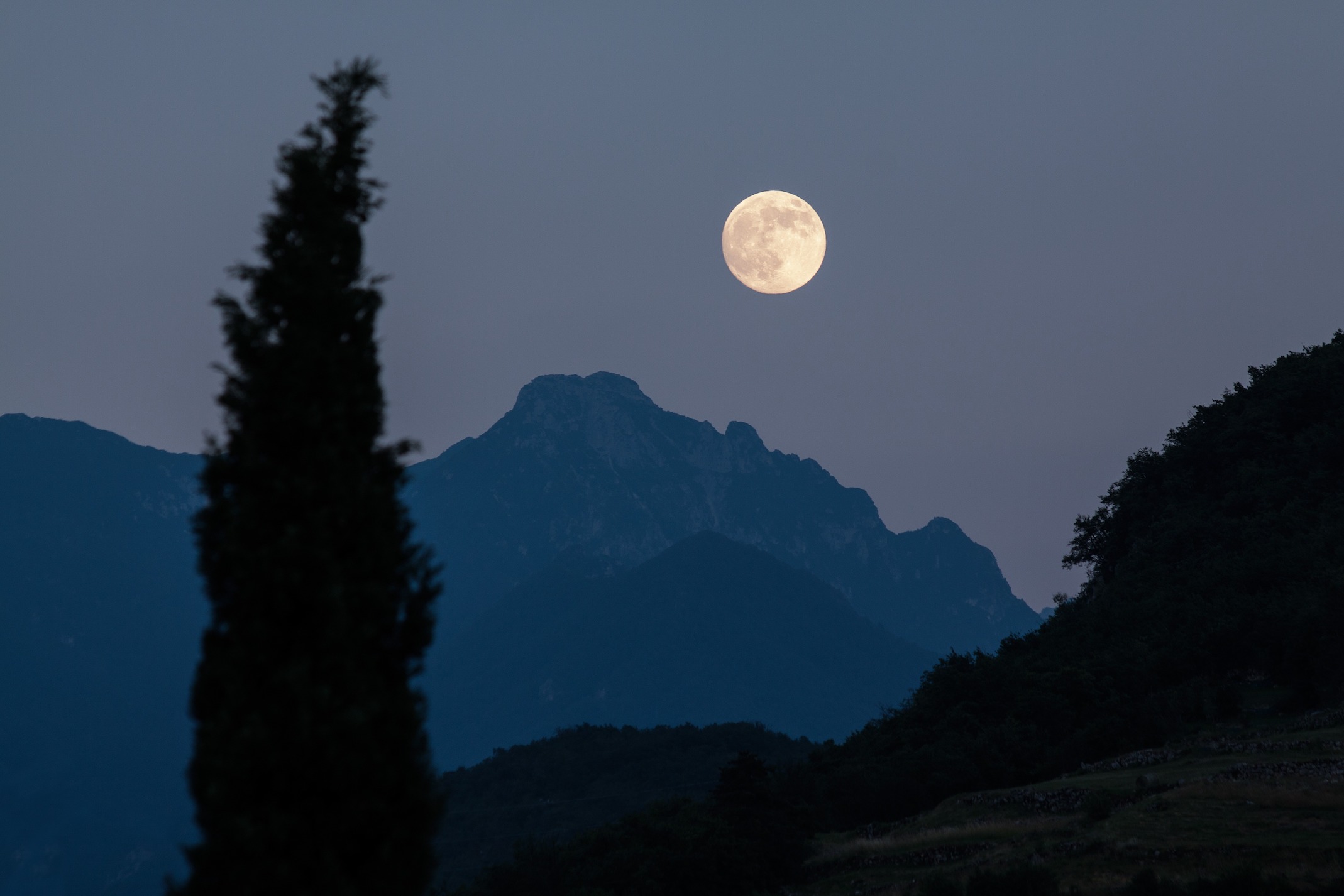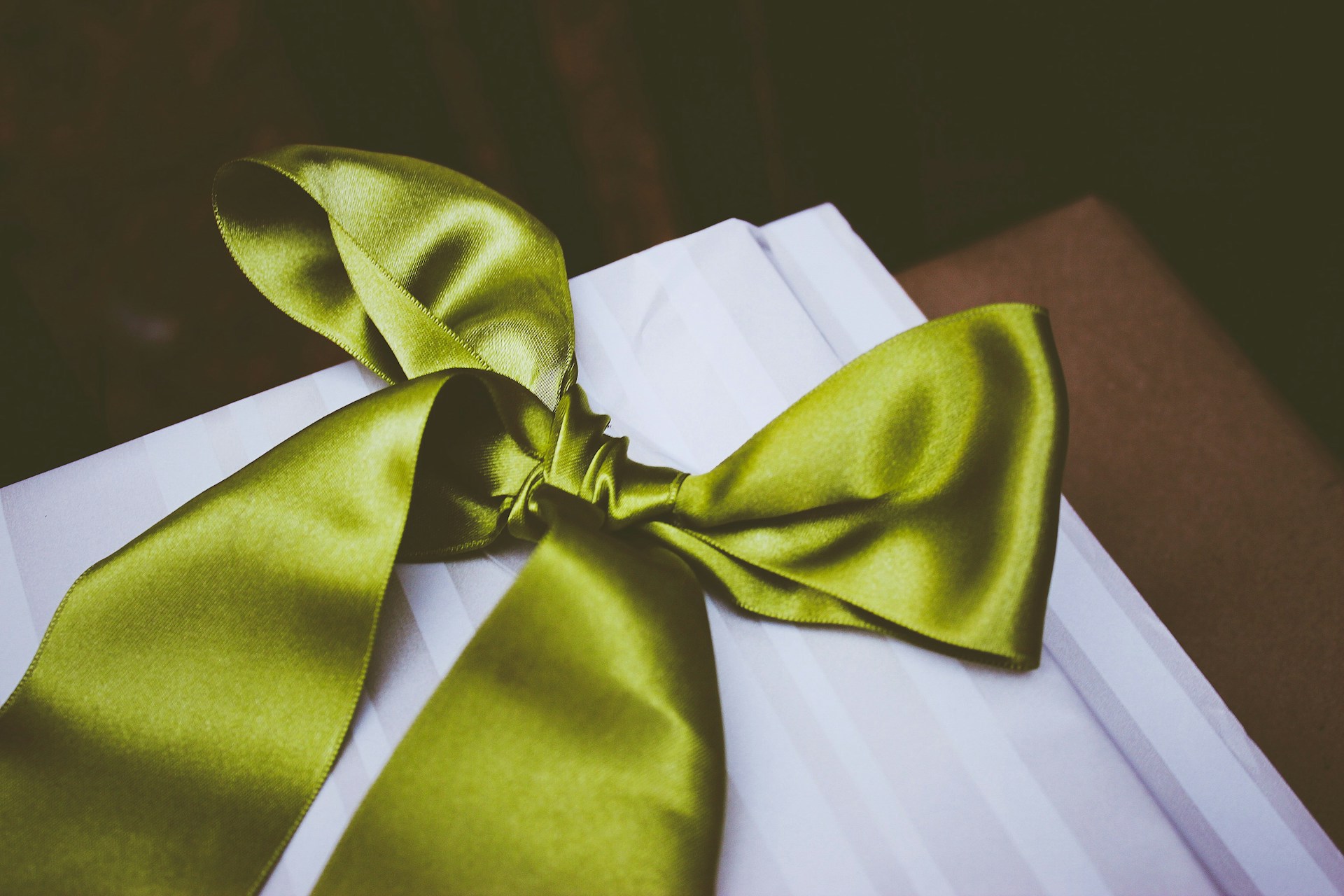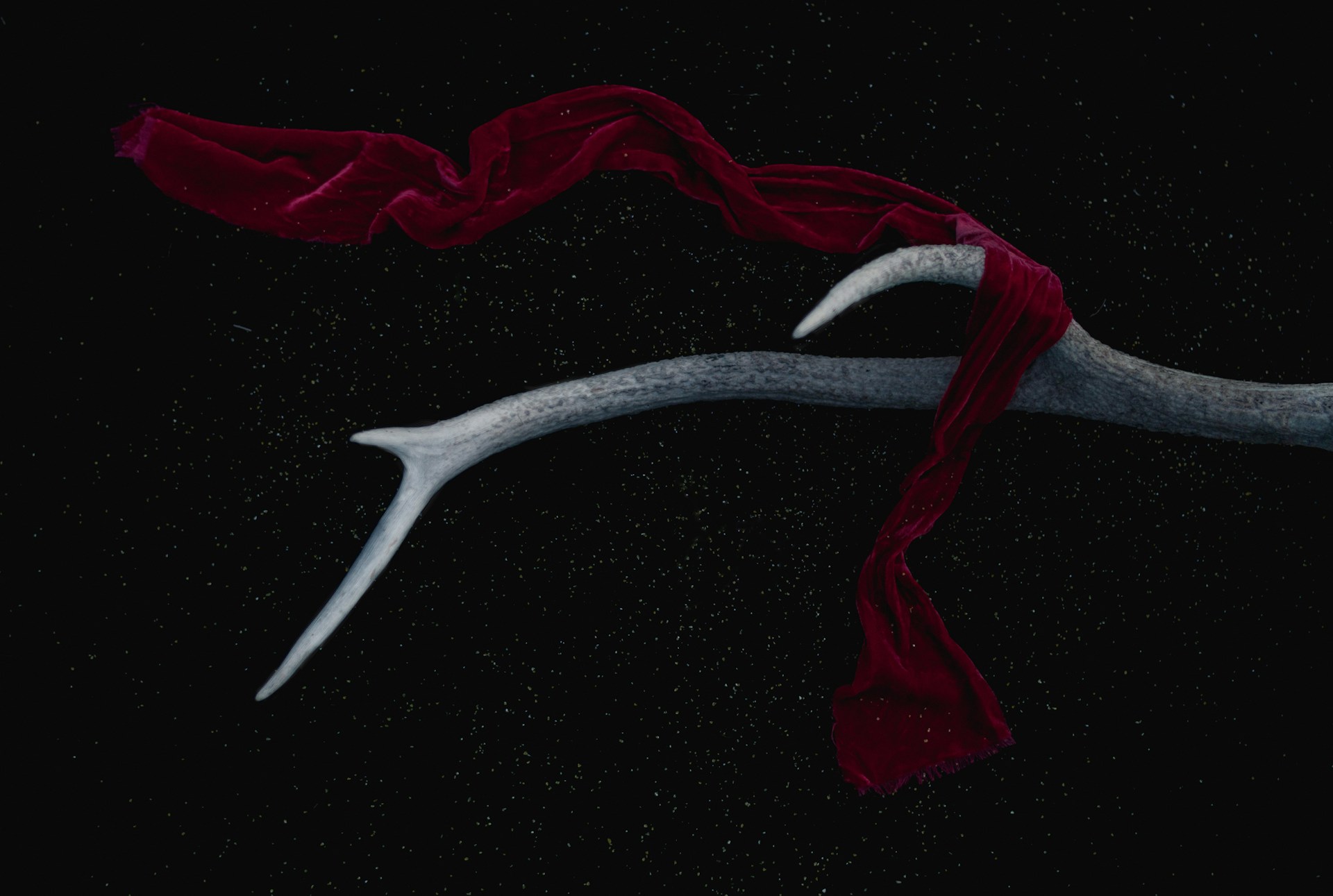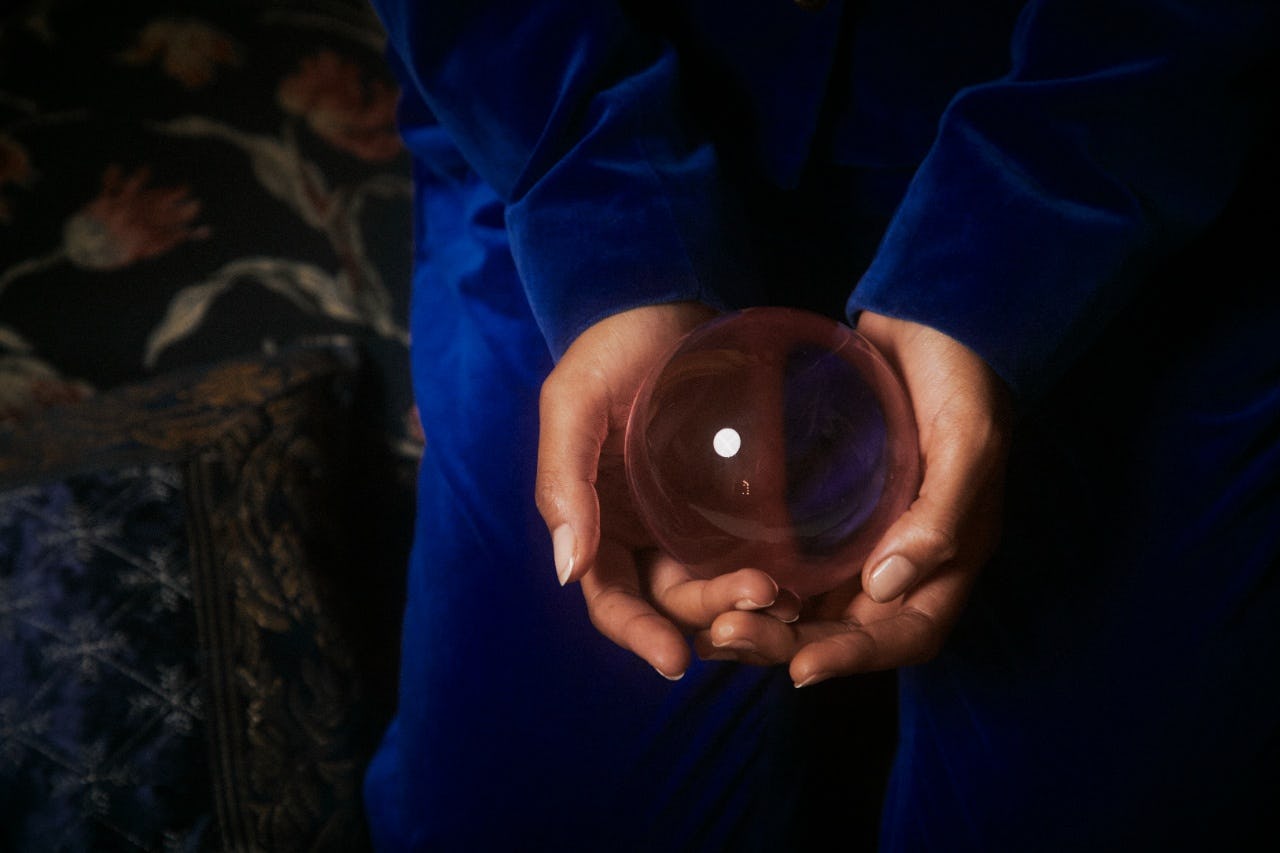As the earth tilts away from the sun, heralding the onset of winter, an ancient and mystical event occurs – the Winter Solstice. This celestial event has been celebrated for millennia, marking the shortest day and the longest night of the year.
Different cultures across time have woven a rich tapestry of myths and folklore around this significant day, known as Yule. From the Norse gods to Roman feasts, each story offers a unique glimpse into how our ancestors found meaning and magick in the darkest time of the year.
The Ancient Origins of Yule
Yule, the ancient festival marking the Winter Solstice, is steeped in a history as rich and deep as the longest night itself.
This pivotal moment in the solar cycle has been celebrated since Neolithic times, with monuments like Stonehenge bearing silent testimony to its significance. In these early societies, the solstice symbolized the death and rebirth of the sun, a crucial event for agrarian communities dependent on solar cycles.
As centuries passed, Yule evolved, absorbing and reflecting the beliefs and rituals of various cultures. From the Romans to the Celts, each civilization left its mark on how we understand and celebrate this time of renewal and hope.
Mythologies of the Winter Solstice
Norse Mythology
In the frostbitten lands of the Norse, Yule was a time of great celebration, honoring Odin and the other gods. Central to their mythology was the Wild Hunt, a spectral procession through the sky led by the god Odin. This fearsome cavalcade was believed to be most powerful during the Solstice, sweeping across the night sky.
Feasts and sacrifices were offered to appease these divine beings, ensuring their favor for the coming year. The Norse also believed that the sun was reborn at Yule, symbolizing the continuous cycle of death and rebirth in nature.
Roman Saturnalia
The Roman celebration of Saturnalia, a festival in honor of Saturn, the god of agriculture, deeply influenced our Yule traditions. Marked by a reversal of social norms, Saturnalia was a time of feasting, goodwill, and freedom for everyone, including slaves.
Gifts were exchanged, and candles lit to signify the return of light. These practices laid the groundwork for many modern Yule and Christmas customs, showcasing the enduring legacy of this ancient festival.
Celtic Traditions
The Celts, deeply connected to the natural world, celebrated Yule with reverence for the ever-changing balance of light and dark. Central to their celebration was the battle between the Oak King, the god of the waxing year, and the Holly King, the god of the waning year.
This symbolic struggle represented the turning of the seasons. The Celts also practiced rituals to drive away evil spirits and ensure prosperity, which over time, transformed into many of the Yule traditions practiced today.
Folklore and Legends Around the World
Slavic Folklore
In the wintry landscapes of Slavic countries, the Winter Solstice is wrapped in tales of Morozko, the Frost King. Morozko, often depicted as a noble figure, symbolizes the harsh, yet protective nature of winter. It is said that he rewards the kind and punishes the greedy, embodying the spirit of giving and the harsh reality of winter.
Slavic people also practiced rituals to welcome the longer days, involving feasting and singing, to ward off the dark spirits of winter and honor the returning light.
Germanic Legends
The Germanic peoples contributed richly to Yule folklore, with tales of Frau Holle, a goddess associated with winter and domesticity. She was believed to shake out snowflakes from her bedding, blanketing the world in white. Her stories often contain themes of kindness and diligence, reflective of the season’s introspective nature.
These legends, deeply ingrained in Germanic culture, have significantly influenced modern Yule celebrations, including the practice of storytelling and honoring the spirits of winter.
Japanese Traditions
In Japan, the Winter Solstice, or Tōji, is intertwined with Shinto beliefs, particularly the story of Amaterasu, the sun goddess. The solstice marks her return, symbolizing the triumph of light over darkness. Traditionally, Japanese customs during this time include soaking in yuzu baths for good health and eating kabocha, a type of squash, to ward off colds.
These unique customs reflect the Japanese approach to Yule, blending reverence for nature with practices aimed at wellbeing and harmony.
The Symbolism of Yule
The symbols associated with Yule are rich with meaning, steeped in ancient lore. The Yule log, a centerpiece of the celebration, symbolizes warmth, light, and the promise of the sun’s return. Evergreens, unyielding to winter’s harshness, represent everlasting life and hope.
These symbols, along with the use of magick and rituals, encapsulate the essence of Yule: a time to release the old and welcome the new, to set intentions and embrace the natural cycle of rebirth.
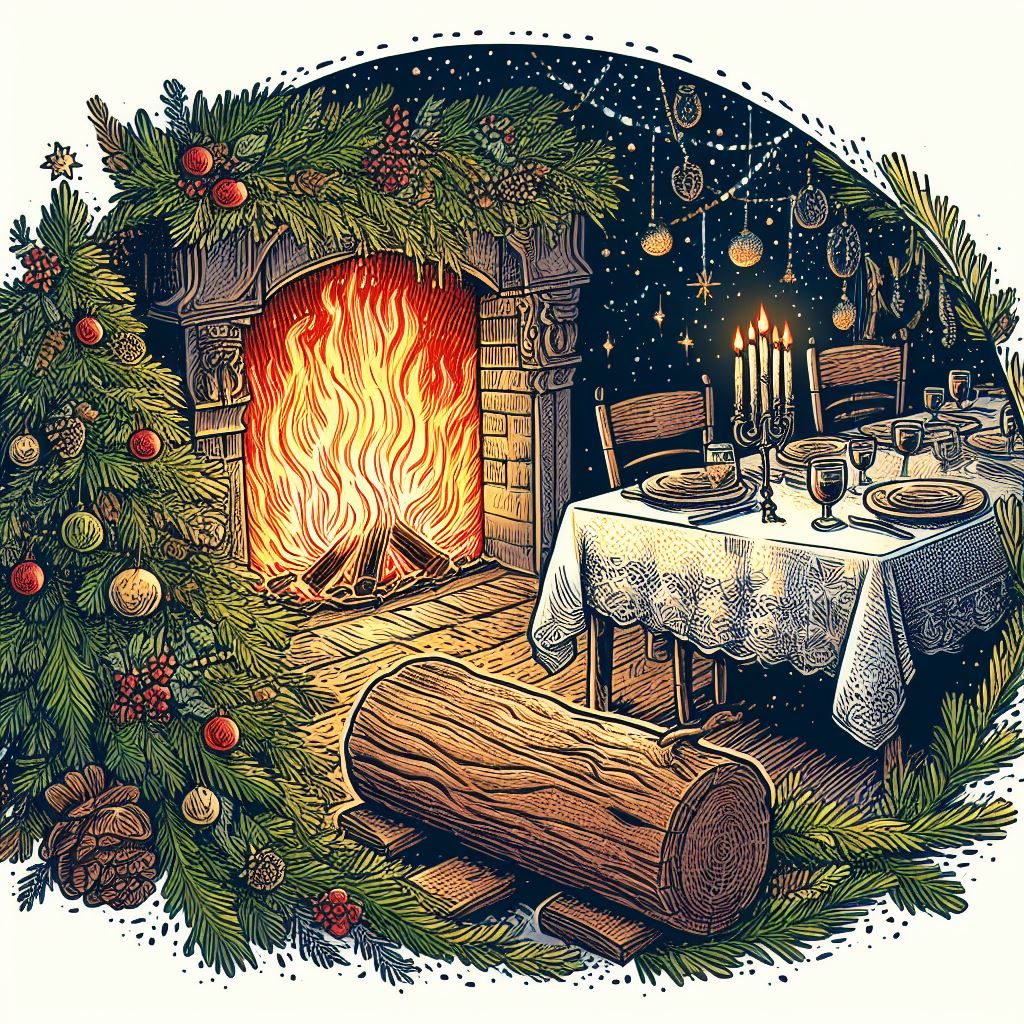
Yule in Contemporary Celebrations
Yule, though rooted in ancient traditions, has found a place in contemporary celebrations. Modern Pagans and Wiccans observe the Winter Solstice with rituals that honor the natural world and its cycles. These practices often involve altars, feasting, and reflecting on the past year while setting intentions for the new one.
Additionally, Yule’s influence on Christmas is undeniable, from the decorating of evergreen trees to the lighting of candles. These customs, though evolved, continue to bring warmth and light to the darkest time of the year.
The Role of Nature and the Cosmos
The Winter Solstice is a cosmic event, marking the point when the earth is farthest from the sun in its orbit. This celestial occurrence is a reminder of our connection to the cosmos and nature’s cycles. The longest night invites introspection and contemplation, while the returning light symbolizes hope and renewal.
Nature, in all its winter glory, plays a central role in Yule celebrations, reminding us of the continuous flow of life and the ever-present possibility of transformation.
As the flames of the Yule log flicker and fade, so does our journey through the myths and folklore of the Winter Solstice. These stories, rich with history and meaning, offer more than just tales of gods and spirits. They remind us of our enduring connection to the past, the importance of nature’s cycles, and the ever-renewing spirit of hope and light in the face of darkness.
Yule, in all its diverse manifestations, continues to enchant and inspire, inviting us to find our own ways to honor this timeless celebration.


